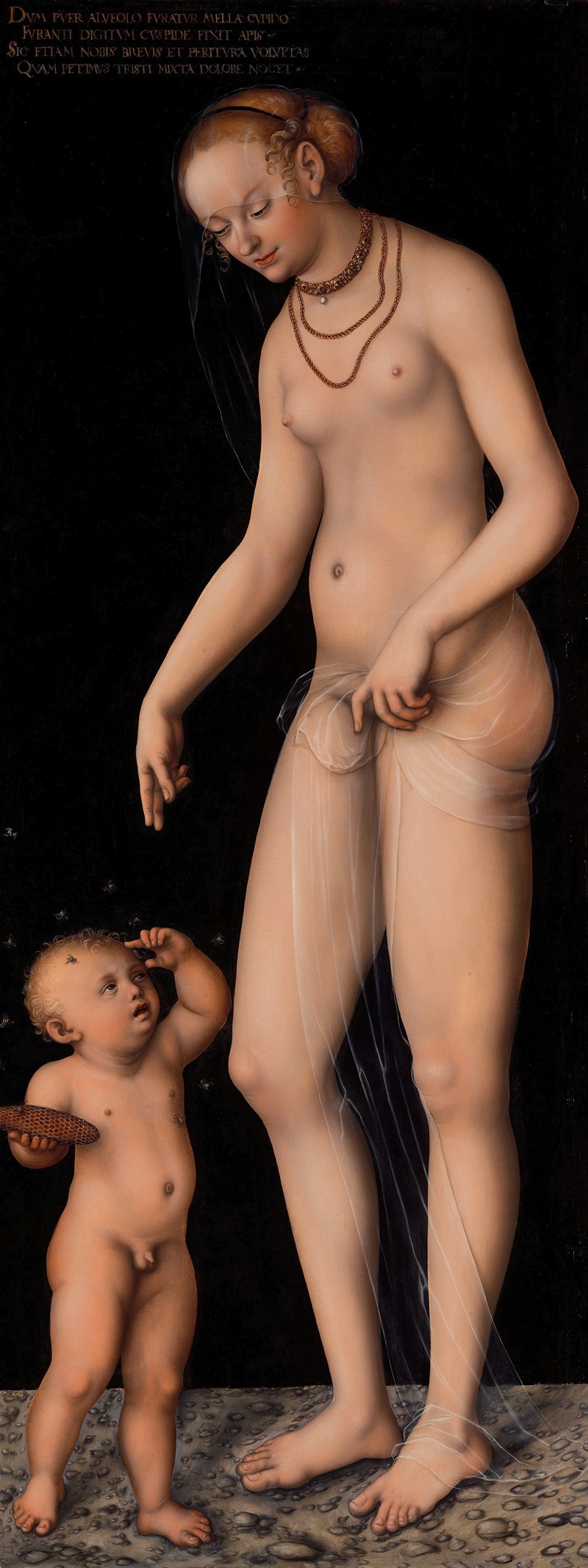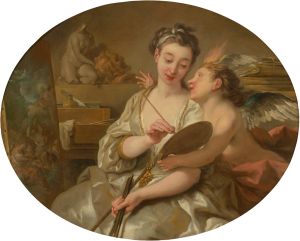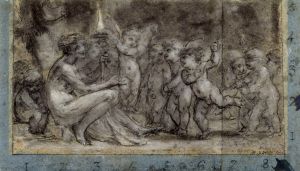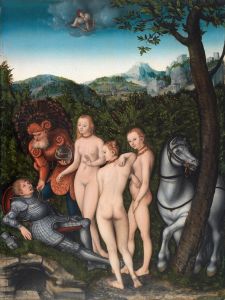
Venus with Cupid as the Honey Thief
A hand-painted replica of Lucas Cranach the Elder’s masterpiece Venus with Cupid as the Honey Thief, meticulously crafted by professional artists to capture the true essence of the original. Each piece is created with museum-quality canvas and rare mineral pigments, carefully painted by experienced artists with delicate brushstrokes and rich, layered colors to perfectly recreate the texture of the original artwork. Unlike machine-printed reproductions, this hand-painted version brings the painting to life, infused with the artist’s emotions and skill in every stroke. Whether for personal collection or home decoration, it instantly elevates the artistic atmosphere of any space.
"Venus with Cupid as the Honey Thief" is a notable painting by the German Renaissance artist Lucas Cranach the Elder. Created around 1525, this artwork is a fine example of Cranach's ability to blend mythological themes with a distinctively Northern Renaissance style. Cranach was a prominent painter and printmaker in Saxony, known for his close association with the Protestant Reformation and his friendship with Martin Luther.
The painting depicts Venus, the Roman goddess of love, beauty, and fertility, accompanied by her son Cupid, the god of desire and affection. In this work, Cupid is portrayed as a mischievous child who has stolen honey from a beehive, only to be stung by the bees. This scene is a visual representation of a classical fable that serves as a moral allegory: the pursuit of fleeting pleasures can lead to unexpected pain. The fable was popular in Renaissance art and literature, often used to convey the idea that love, while sweet, can also bring suffering.
Cranach's depiction of Venus is characteristic of his style, showcasing a slender, elongated figure with delicate features. Venus is shown standing gracefully, with a serene expression, embodying both beauty and tranquility. Her nudity is partially concealed by a translucent veil, a common motif in Cranach's work that adds an element of modesty while still emphasizing her divine allure. The background is typically sparse, focusing attention on the figures and their interaction.
The painting is notable for its use of color and detail, with Venus's pale skin contrasting against the darker tones of the landscape. Cranach's skillful use of oil paints allows for a smooth texture and subtle gradations of light and shadow, enhancing the three-dimensionality of the figures. The bees, though small, are rendered with careful attention, highlighting Cranach's interest in naturalistic detail.
"Venus with Cupid as the Honey Thief" reflects the influence of both Italian Renaissance ideals and Northern European artistic traditions. While the subject matter is rooted in classical mythology, Cranach's interpretation is distinctively Northern, with an emphasis on moralizing themes and a more reserved approach to sensuality compared to his Italian contemporaries.
The painting is part of a series of works by Cranach that explore themes of love and beauty through mythological subjects. His repeated use of Venus and Cupid in various compositions suggests a fascination with the complexities of love and desire, as well as the human condition. Cranach's ability to convey these themes with elegance and subtlety has contributed to his enduring reputation as one of the leading artists of the German Renaissance.
Today, "Venus with Cupid as the Honey Thief" is housed in several versions across different museums, with notable examples in the collection of the National Gallery in London and the Gemäldegalerie in Berlin. These works continue to be studied and admired for their artistic merit and the insight they provide into the cultural and intellectual currents of the 16th century.


















